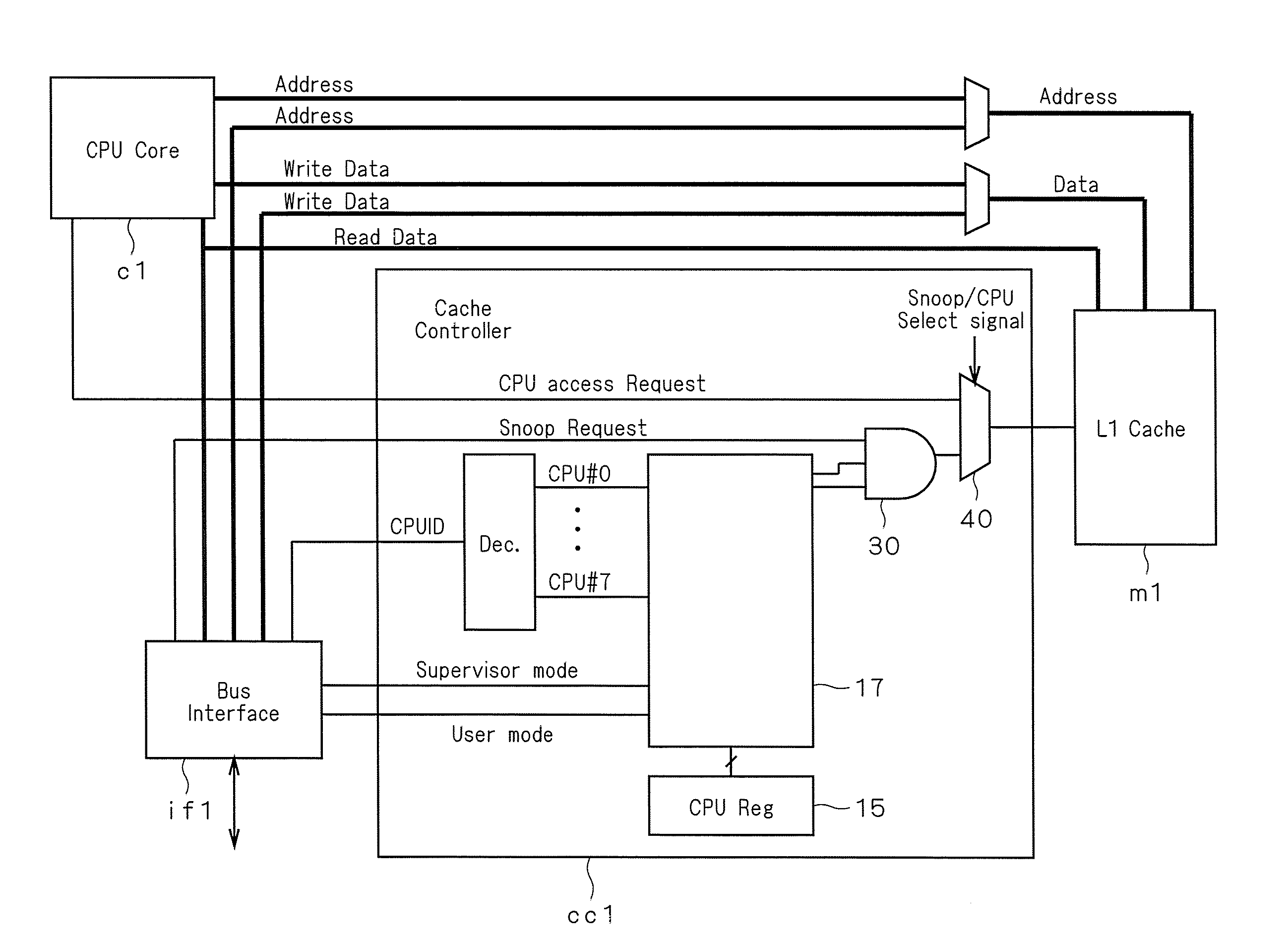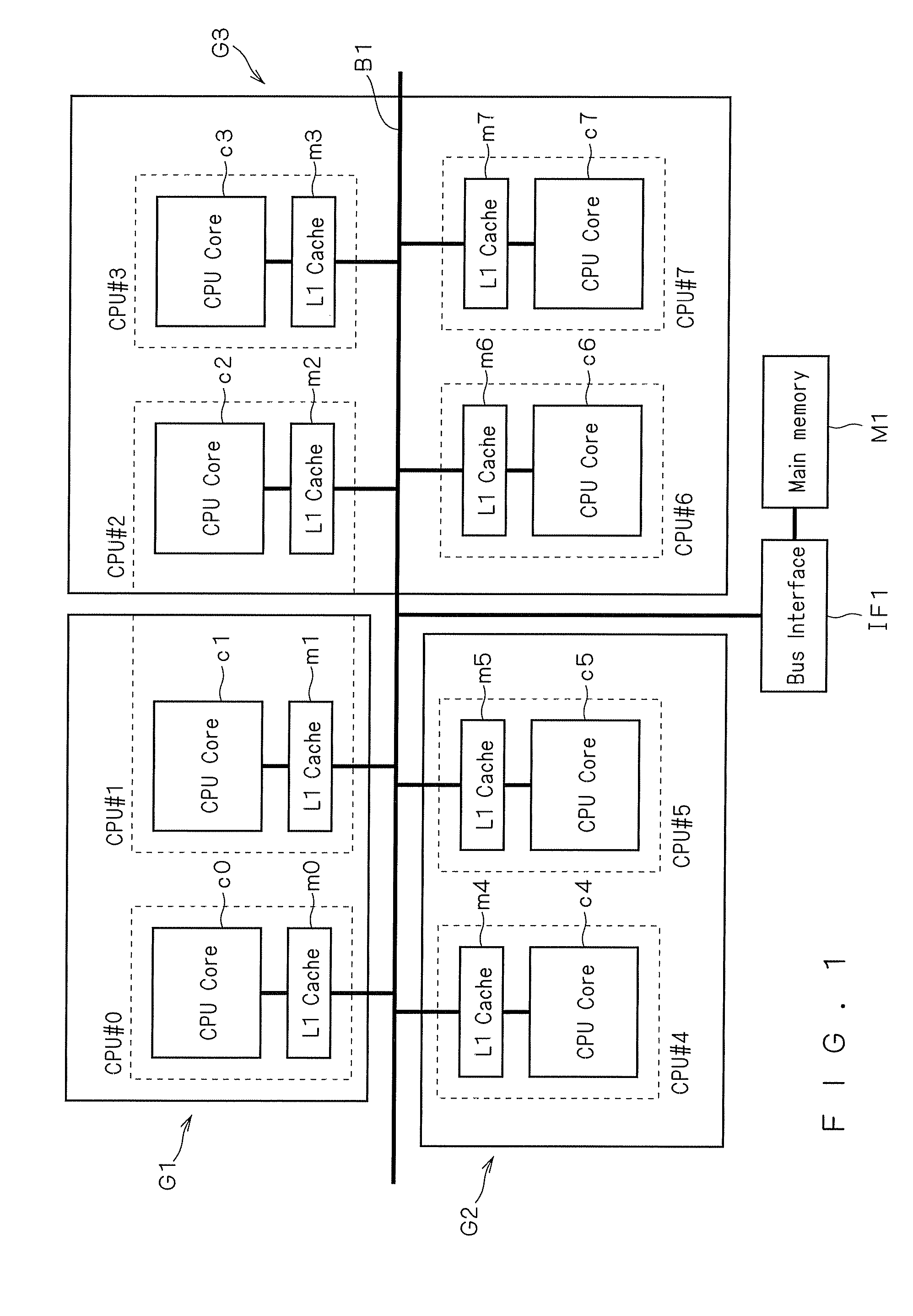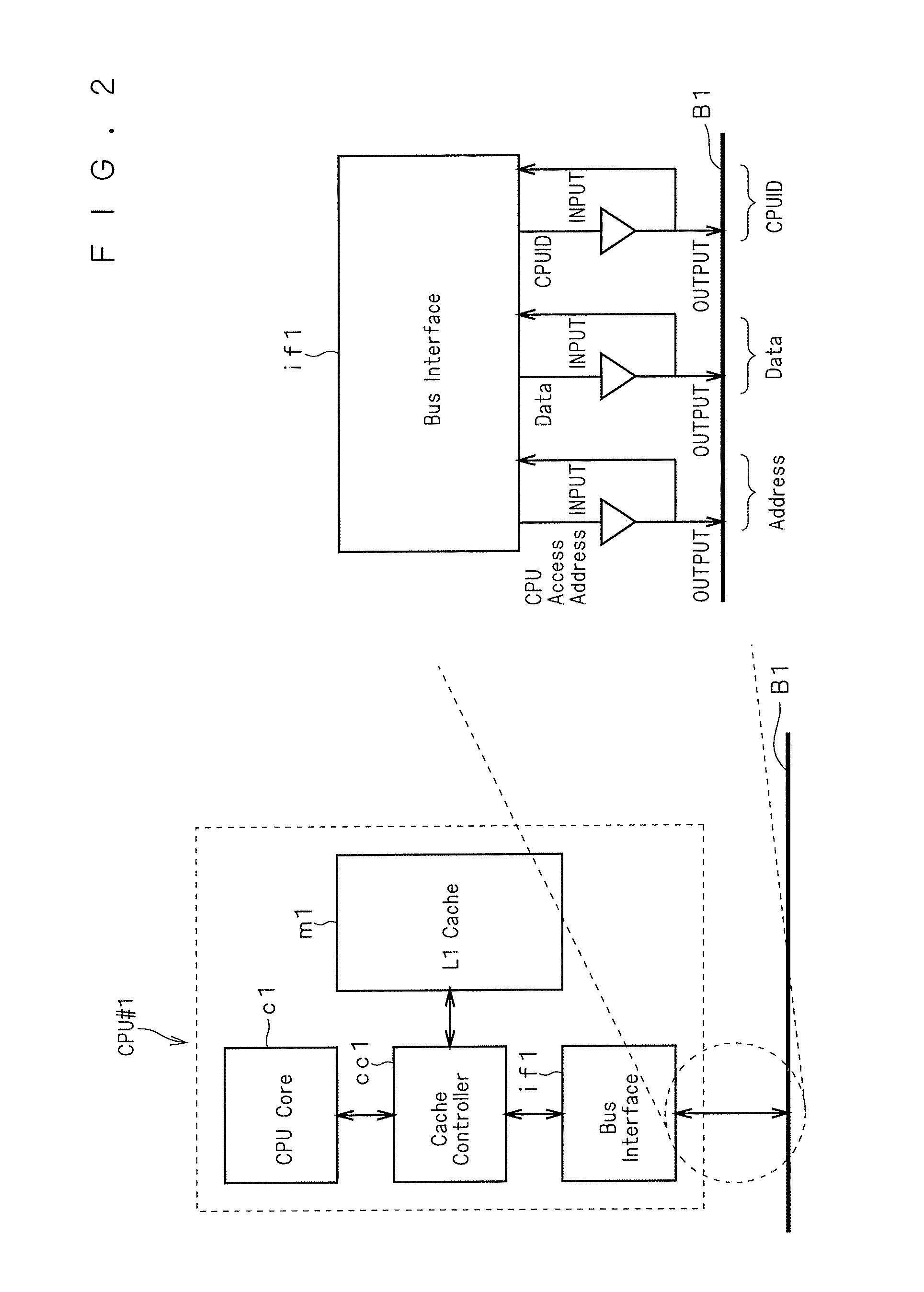Bus Coupled Multiprocessor
- Summary
- Abstract
- Description
- Claims
- Application Information
AI Technical Summary
Benefits of technology
Problems solved by technology
Method used
Image
Examples
first embodiment
[0035]FIG. 1 is a block diagram showing a constitution of a bus coupled multiprocessor according to the present embodiment.
[0036]As shown in FIG. 1, each of eight CPUs #0, #1, #2, #3, #4, #5, #6, and #7 is connected to the same bus B1. In addition, a bus interface IF1 and a main memory M1 are connected to the bus B1. Here, it is assumed that all of the CPUs #0 to #7 have the same function and operate as eight symmetric multiprocessors.
[0037]Furthermore, as shown in FIG. 1, the processors #0 to #7 are divided into a plurality of groups. For example, the processors #0 to #7 are divided into a plurality of groups based on an operating system (OS) to be executed. That is, each group has an OS different from each other.
[0038]According to the example shown in FIG. 1, the CPUs #0 and #1 belong to a group G1. The CPUs #4 and #5 belong to a group G2. The CPUs #2, #3, #6, and #7 belong to a group G3. Here, a first OS is activated in the CPUs #0 and #1 belonging to the group G1. A second OS is...
second embodiment
[0088]The bus coupled multiprocessor according to the second embodiment can determine whether each CPU performs the snooping process or not depending on the operation mode of each CPU based on the first embodiment.
[0089]Therefore, the bus coupled multiprocessor according to the present embodiment also includes the constitution shown in FIG. 1. That is, each of eight CPUs #0, #1, #2, #3, #4, #5, #6, and #7 is connected to the same bus B1. In addition, a bus interface IF1 and a main memory M1 are connected to the bus B1. Here, it is assumed that all of the CPUs #0 to #7 have the same function and operate as eight symmetric multiprocessors.
[0090]Furthermore, as described in the first embodiment, the processors #0 to #7 are divided into a plurality of groups. For example, the processors #0 to #7 are divided into a plurality of groups based on the operating system (OS) to be executed. That is, each group has an OS different from each other.
[0091]In addition, a more specific constitution ...
PUM
 Login to View More
Login to View More Abstract
Description
Claims
Application Information
 Login to View More
Login to View More - R&D
- Intellectual Property
- Life Sciences
- Materials
- Tech Scout
- Unparalleled Data Quality
- Higher Quality Content
- 60% Fewer Hallucinations
Browse by: Latest US Patents, China's latest patents, Technical Efficacy Thesaurus, Application Domain, Technology Topic, Popular Technical Reports.
© 2025 PatSnap. All rights reserved.Legal|Privacy policy|Modern Slavery Act Transparency Statement|Sitemap|About US| Contact US: help@patsnap.com



